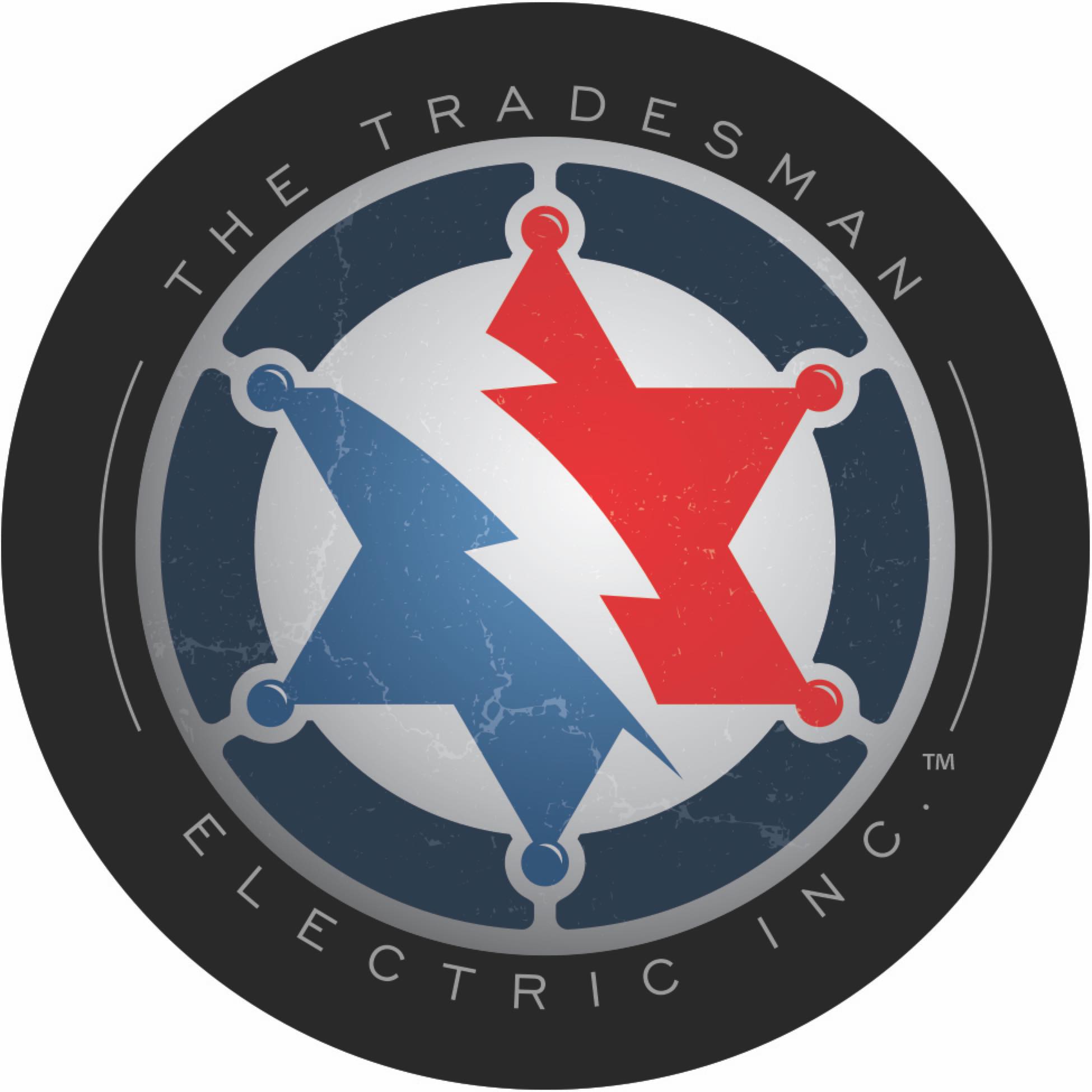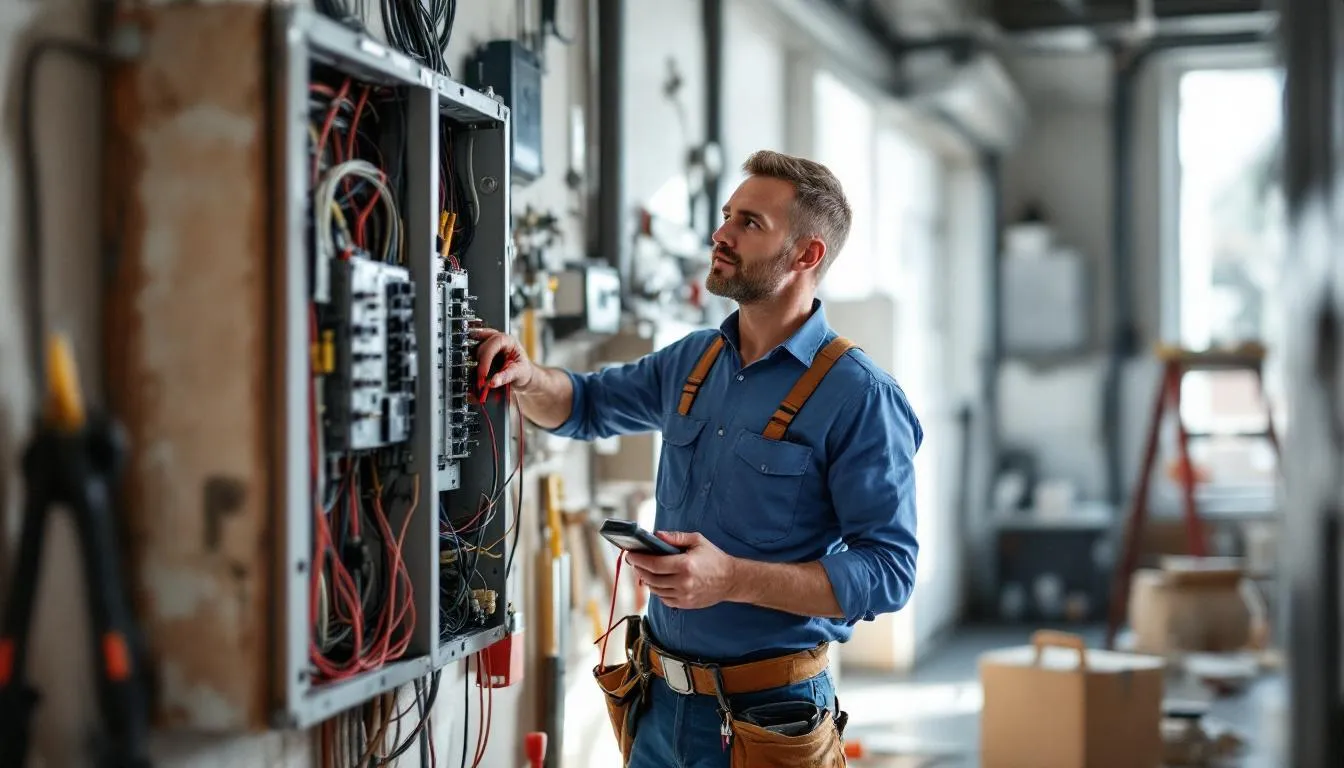This electrical panel replacement comprehensive guide is designed to help you identify when to replace your panel, understand the types you can choose from, and walk you through the replacement process. We’ll also discuss costs and safety to ensure a smooth upgrade.
Key Takeaways
- Identifying signs such as frequent circuit breaker trips and scorched outlets is crucial for determining when to replace an electrical panel to ensure safety and efficiency.
- Understanding the various types of electrical panels and selecting the appropriate one based on household needs can significantly enhance electrical system performance.
- Hiring a licensed professional for electrical panel replacement is essential for safety, compliance with regulations, and avoiding costly mistakes associated with DIY attempts.
Introduction to Electrical Panels
An electrical panel, often referred to as a circuit breaker panel or service panel, is the critical component at the heart of your home’s electrical system. Acting as the central hub, the electrical panel connects the utility company’s power lines to your home’s internal wiring, distributing electricity safely and efficiently to various circuits throughout the house. Each circuit is protected by a circuit breaker, which is designed to cut power in the event of an overload or short circuit, helping to prevent electrical fires and other safety hazards.
The breaker panel ensures that electricity flows where it’s needed, powering everything from lights and appliances to heating and cooling systems. By organizing and managing the flow of electrical current, the service panel plays a vital role in maintaining the safety and reliability of your home’s electrical system. Understanding the function and importance of your electrical panel is essential for keeping your home safe and ensuring that all electrical components operate smoothly.
Recognizing the Need for Electrical Panel Replacement
Recognizing the right time to replace your electrical panel is key to ensuring a safe and efficient electrical system. When considering replacement, it is important to have a professional evaluate the existing panel to determine if it is outdated or unable to meet your home’s needs. Signs that your panel may need replacement include:
- Frequent circuit breaker trips indicate that the panel may be struggling to handle your home’s electrical load.
- Breakers that do not reset.
- Breakers that appear damaged.
Short circuits can also be a warning sign of panel failure and are a major safety concern, as they can lead to electrical surges and increase the risk of fire.
In such cases, it might be time to consider a complete panel replacement rather than just a repair. Sometimes, electrical panel repair may be possible for minor issues, but if the panel is severely damaged or outdated, a full replacement is necessary to ensure safety and reliability.
Another tell-tale sign is warm or scorched breakers or outlets, which suggest overheating and pose a significant fire hazard, including a burning smell. Flickering lights can also indicate that your electrical panel is nearing its maximum capacity, signaling the need for an upgrade due to excessive electrical current, potential electrical issues, frequent tripping, and an overloaded circuit.
Outdated panels, especially those that still use fuse boxes, are less efficient and more prone to safety hazards compared to modern circuit breaker panels. Keeping an old electrical panel increases the risk of electrical fires and system failures, so professional replacement is crucial to address these safety concerns and ensure long-term reliability. Recognizing these signs early can help prevent electrical fires and ensure your home’s electrical system operates smoothly.
Types of Electrical Panels

Understanding the different types of electrical panels available is essential for making an informed decision during an upgrade. An electrical panel is also known as a breaker box or load center, serving as the main distribution point for electricity in your home and protecting circuits with breakers or fuses. The panel itself is a metal box with a panel cover that shields and organizes the internal electrical components, ensuring safety and preventing external damage.
The most common types include:
- Main breaker panels: Designed to control the power supply to the entire home, effectively managing the distribution of electricity. As the central hub of your home’s electrical panel system, main breaker panels (or breaker boxes) connect to public utilities and organize power distribution.
- Sub panels
- Fuse boxes
Breaker boxes, also referred to as load centers or electrical panels, are essential for home safety by distributing power and managing circuit protection. Fuse boxes, although less common today, operate by melting fuses to stop the flow of electricity in an electrical circuit, which can be less convenient and more hazardous than modern fuse box circuit breaker panels that use switches to trip and turn off the power.
For homes that require additional circuits, sub-panels can be installed to extend the capacity of the main panel. Knowing which type of panel suits your needs can significantly impact the efficiency and safety of your electrical system.
Circuit Breakers and Electrical Panel Functionality
Circuit breakers are the backbone of your electrical panel’s safety system. These devices are engineered to monitor the flow of electricity through each circuit in your home. If a circuit becomes overloaded or a short circuit occurs, the circuit breaker will trip—immediately interrupting the flow of electricity to prevent overheating, electrical fires, and damage to your electrical system.
Frequent circuit breaker trips, flickering lights, or a burning smell near your electrical panel are warning signs that should never be ignored. These issues may indicate underlying problems that require prompt attention, such as the need for an electrical panel replacement or upgrade. Regularly inspecting your electrical panel and its circuit breakers is essential for identifying potential hazards before they escalate.
Because electrical panel work involves complex systems and strict adherence to local electrical codes, it’s crucial to hire a licensed electrician for any panel replacement, circuit breaker upgrades, or electrical work. Professional electricians ensure that all repairs and upgrades are performed safely and in compliance with regulations, protecting your home and family from unnecessary risks.
Steps in the Electrical Panel Replacement Process
Replacing an electrical panel is a complex process that involves several critical steps:
- Consult with a professional electrician. It is essential to choose a reputable electrician to ensure safety and quality throughout the upgrade.
- Ensure the electrician is licensed, as they possess the specialized skills required for such complex tasks.
- Clear the area around the electrical panel before any work begins to allow easy access for the electrician.
The process may also involve relocating the panel, which includes finding a new location, removing or replacing drywall, and trenching for underground connections if necessary. After the new panel is installed and tested, the electrician will restore power to the home to ensure everything is functioning properly. Let’s delve into the detailed steps involved in the electrical panel replacement process.
Initial Inspection
The initial inspection is a critical first step in the electrical panel replacement process. Consulting a licensed electrician ensures that the upgrade is carried out safely and efficiently. During the inspection, the electrician will examine your entire electrical system to determine what upgrades are necessary.
A professional can identify potential issues that may not be visible to the untrained eye, such as ground faults or faulty wiring, helping to prevent future problems. This thorough inspection sets the stage for a successful electrical panel upgrade, ensuring that all safety and compliance standards are met. It is important to regularly inspect the electrical panel to maintain its functionality.
Choosing the Right Panel
Selecting the appropriate electrical panel is crucial for meeting your current and future electrical needs. The size and type of the panel depend on various factors, including the electrical load of your home and potential future requirements.
For instance, if you plan to add new appliances such as a heat pump or increase your home’s electrical capacity, you’ll need a panel that can handle the additional load. Consulting with a professional electrician can help you choose the right panel, whether it’s a main breaker panel, a main lug panel without a main breaker, or a subpanel to extend the capacity of your existing system.
Installation and Testing
The installation phase involves several steps to ensure the new panel functions correctly. First, the old panel is removed, and the power is disconnected. The new panel is then installed, and all connections are securely made.
Once installed, the electrician will perform a series of tests to ensure that the panel and its electrical components are working correctly. This includes checking breaker performance, circuit sizing, and overall panel functionality. Proper installation and testing are essential to ensure the safety and efficiency of your new electrical panel work.
Cost Considerations for Electrical Panel Replacement
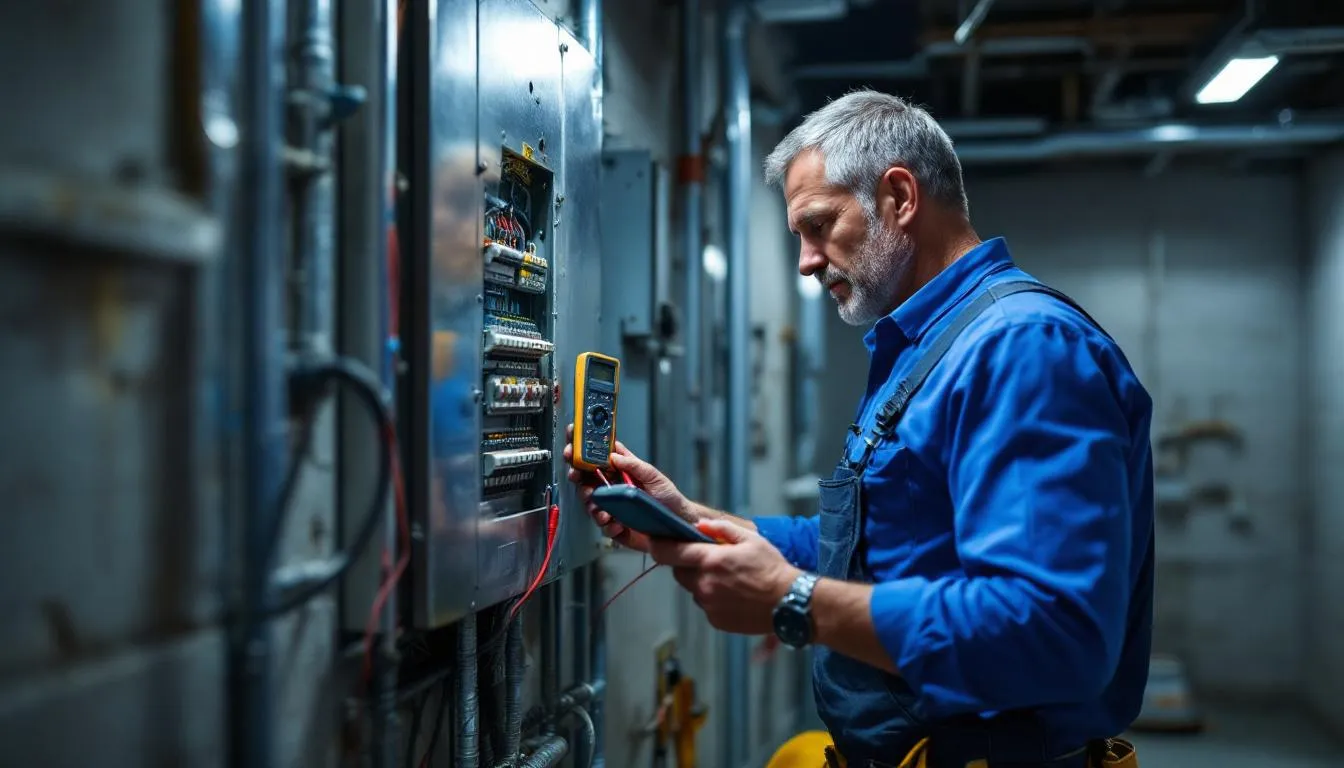
The cost of replacing an electrical panel can vary widely based on several factors. On average:
- A basic 100-amp panel replacement ranges from $1,200 to $2,500.
- Upgrading to a 200-amp service typically costs between $2,500 and $4,500.
- Installing a 400-amp service can cost over $4,500, depending on specific requirements.
Several factors influence these costs, including the type of panel, labor rates, and permit fees. Additional work, such as wiring upgrades or adding circuits, can also increase the overall cost.
Obtaining a city permit for any panel upgrade is necessary and can add to the overall expense. Homeowners should have a conversation about potential additional costs with their electrician. This will help them avoid any unexpected surprises.
Safety and Compliance
Safety and compliance are paramount when it comes to electrical panel replacement. The electrical panel is responsible for safely managing and distributing electrical power throughout the home. Older electrical panels may not meet current safety standards or adequately support modern electrical demands. Electrical installations must comply with the National Electrical Code to ensure safety and reliability.
Proper installation methods and materials are essential to avoid hazards such as electric shock or fire. Hiring a professional electrician ensures compliance with local electrical codes, which is vital for safety. Professional electricians can help avoid legal issues by ensuring that all electrical installations adhere to regulatory standards.
DIY vs. Hiring a Professional Electrician
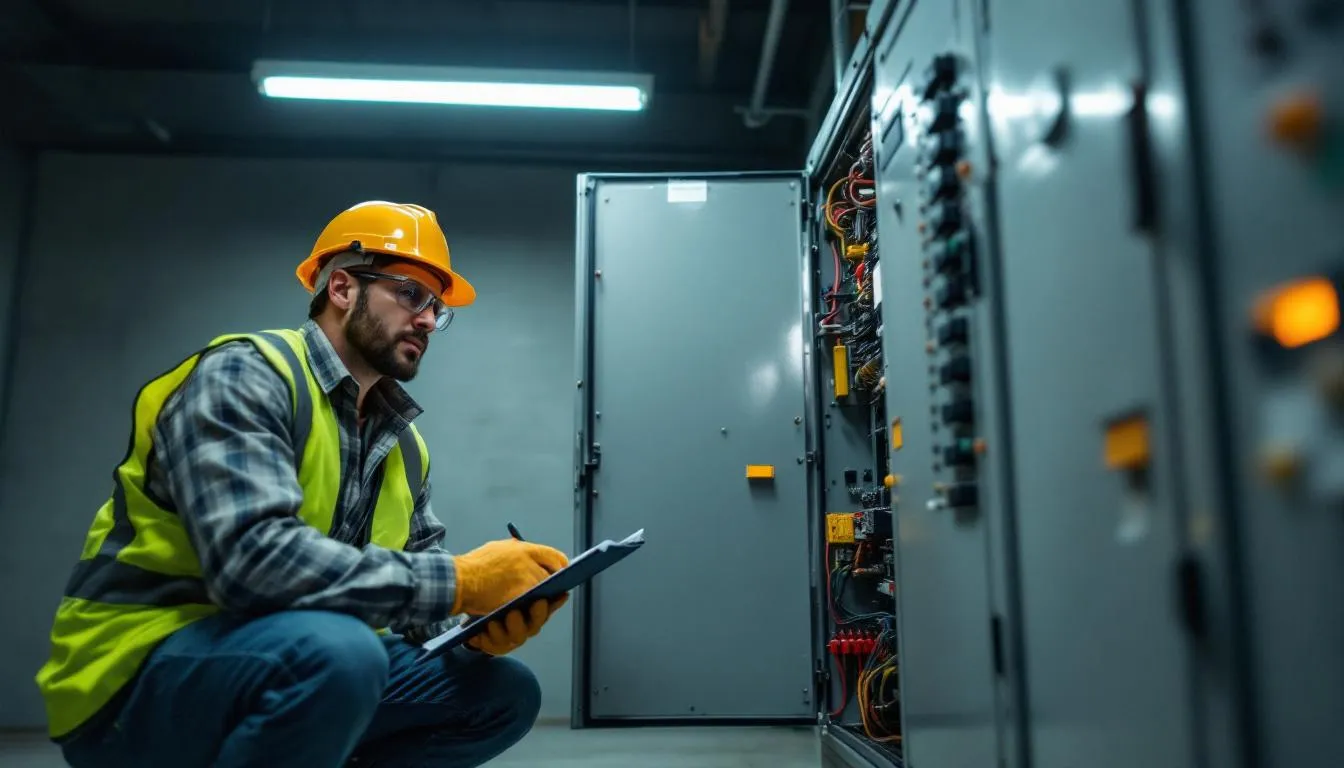
While the idea of a DIY electrical panel upgrade may seem appealing, it is fraught with risks. Improper DIY electrical work can lead to long-term issues such as faulty wiring, which can increase future repair costs. Errors in electrical work can result in severe harm or even death.
Hiring a professional electrician ensures compliance with local electrical codes and regulations. Licensed electricians have extensive training and knowledge of state codes, ensuring safety. Homeowners’ insurance probably won’t cover repairs from DIY mistakes, leading to higher costs if errors occur.
The peace of mind that comes with professional assistance is invaluable when dealing with something as critical as your home’s electrical system.
Benefits of Upgrading Your Electrical Panel
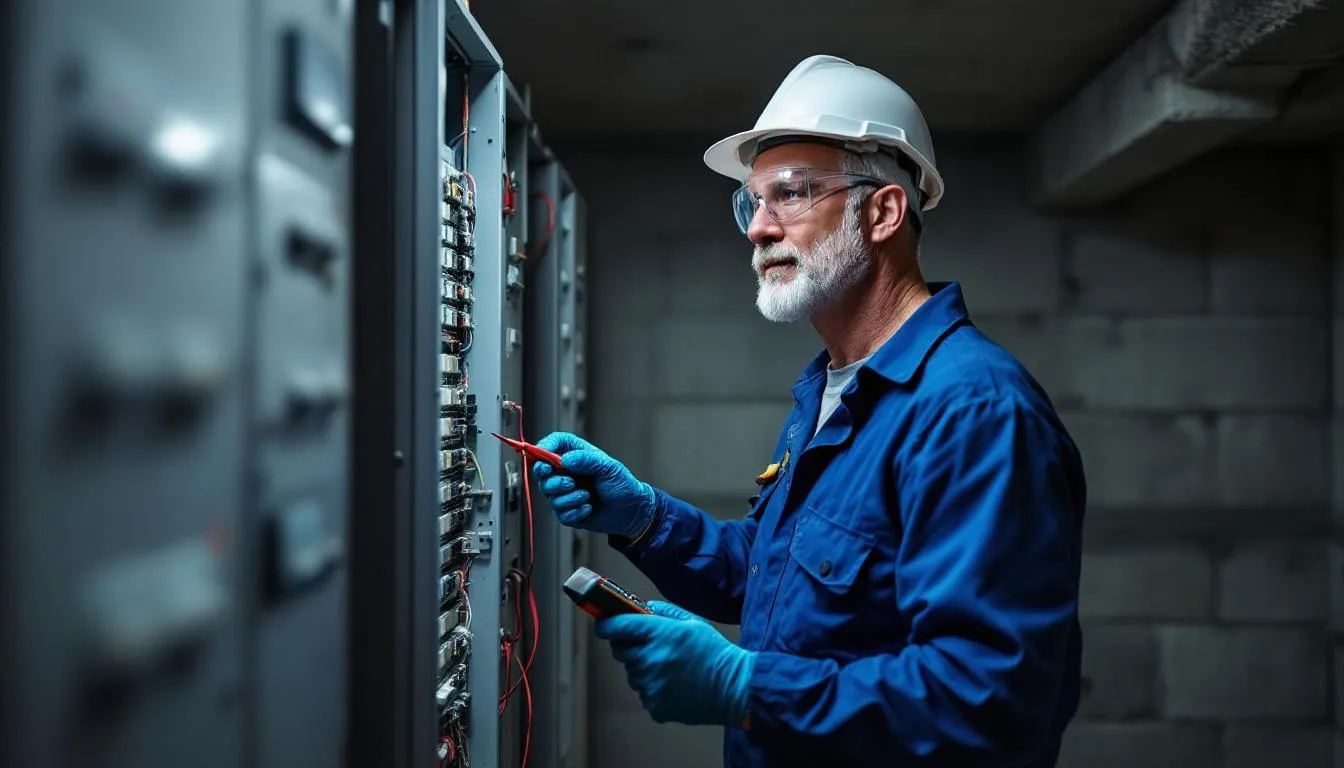
Upgrading to a new electrical panel offers numerous benefits, including:
- Increased home safety by reducing the risk of electrical fires and overloads
- Meeting modern power demands
- Allowing for more circuits
- Accommodating new appliances
An upgraded panel can improve energy efficiency and increase the resale value of your home’s electrical panel. Overall, upgrading your electrical panel and electrical panel upgrades enhances safety, capacity, and efficiency, making it a valuable investment for homeowners.
Preparing for Your Electrical Panel Upgrade
Preparing for an electrical panel upgrade involves several important steps. Homeowners should discuss potential power outages with family members to minimize disruptions during the upgrade process. The process begins with requesting a service change from the utility company.
Scheduling the upgrade during non-critical power use times can help reduce inconvenience. Before the upgrade, it’s essential to consult with electricians and obtain the necessary permits. Proper preparation ensures a smooth and efficient electrical panel replacement process.
Electrical Service Upgrade and Air Conditioning
Adding new appliances, especially high-demand ones like air conditioning units, can significantly increase your home’s electrical load. If your existing electrical panel isn’t equipped to handle this additional demand, an electrical service upgrade may be necessary to ensure safe and reliable operation. Upgrading your electrical panel allows for more circuits and greater capacity, supporting new appliances without overloading the system.
A professional electrician will assess your current electrical panel and determine whether an upgrade is required to accommodate your air conditioning or other new appliances. They will also ensure that all work complies with the National Electric Code and local regulations, safeguarding your home against electrical issues and potential hazards.
Regular maintenance, including inspections of your electrical panel and circuit breakers, is key to preventing problems and ensuring your electrical system can handle the demands of modern living. By staying proactive and working with a qualified professional, you can enjoy the comfort of new appliances like air conditioning while maintaining a safe and efficient electrical system.
Tradesman Electric: Your Trusted Local Expert
When it comes to electrical panel replacements in Orange County and surrounding areas, Tradesman Electric stands out as the trusted local expert. Serving the community since 1991, Tradesman Electric specializes in electrical panel replacements and upgrades. Our team of licensed, bonded, and insured electricians ensures professional standards in every service we provide.
We understand the intricacies of modern electrical systems and are committed to delivering comprehensive electrical services that meet all local electrical codes and safety standards. If you’re considering an electrical panel upgrade, don’t hesitate to call Tradesman Electric, your trusted electrical contractor, for reliable, skilled, and safe service.
Summary
Upgrading your electrical panel is a crucial step in ensuring the safety and efficiency of your home’s electrical system. Recognizing the signs that it’s time for a replacement, understanding the types of panels available, and knowing the steps involved in the replacement process can help you make informed decisions. Cost considerations, safety, and compliance are all essential factors to keep in mind.
By hiring a professional electrician and preparing adequately for the upgrade, you can enhance your home’s electrical capacity, improve energy efficiency, and increase your home’s value. Trust Tradesman Electric to handle your electrical panel replacement needs with expertise and professionalism.
Frequently Asked Questions
What are the signs that my electrical panel needs replacement?
If you notice frequent circuit breaker trips, flickering lights, or warm and scorched breakers, it is likely time to consider replacing your electrical panel. Addressing these issues promptly is crucial for maintaining electrical safety in your home.
What types of electrical panels are available for residential use?
Residential electrical panels primarily consist of main breaker panels, sub-panels, and fuse boxes, each serving distinct functions in managing electrical distribution. It is essential to choose the right type based on your specific electrical needs.
How much does it cost to replace an electrical panel?
Replacing an electrical panel typically costs between $1,200 to $2,500 for a standard 100-amp panel, while a 400-amp service can exceed $4,500. Therefore, it’s essential to consider panel size and service requirements for an accurate estimate.
Why should I hire a professional electrician for an electrical panel upgrade?
Hiring a professional electrician for an electrical panel upgrade is essential for ensuring compliance with local codes and safety standards, thereby significantly reducing the risk of long-term issues. Their expertise guarantees that the upgrade is performed correctly and safely.
What benefits can I expect from upgrading my electrical panel?
Upgrading your electrical panel enhances safety, boosts energy efficiency, and meets modern power demands, ultimately increasing your home’s value. This investment ensures a reliable and safe electrical system for your needs. An upgraded panel also helps ensure the safe and efficient operation of electric appliances in your home.
